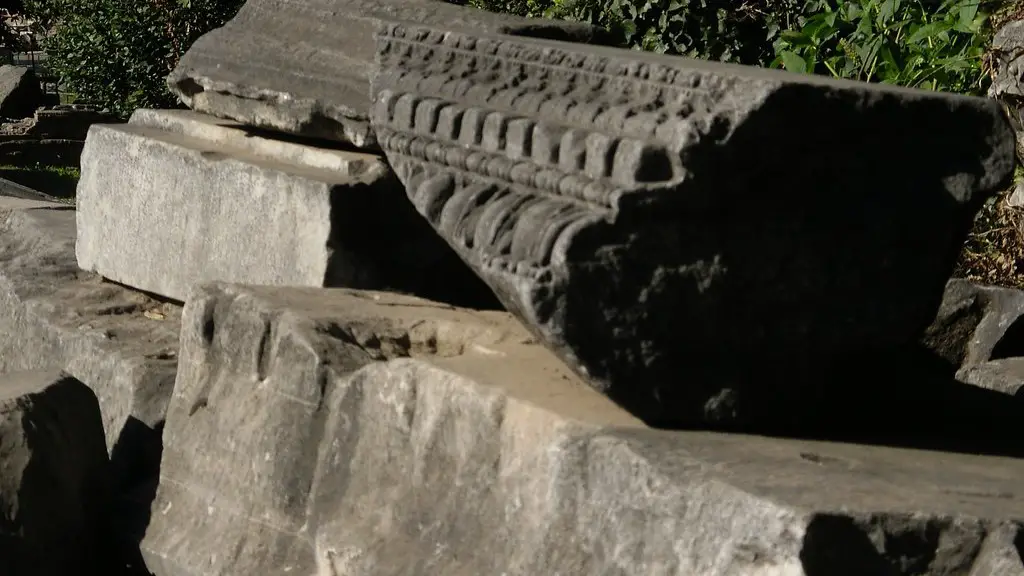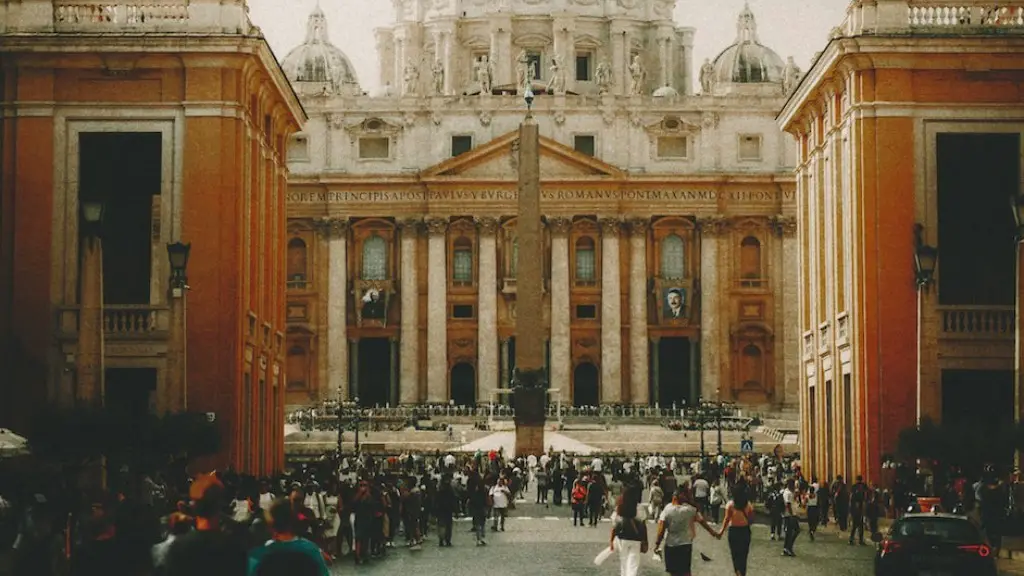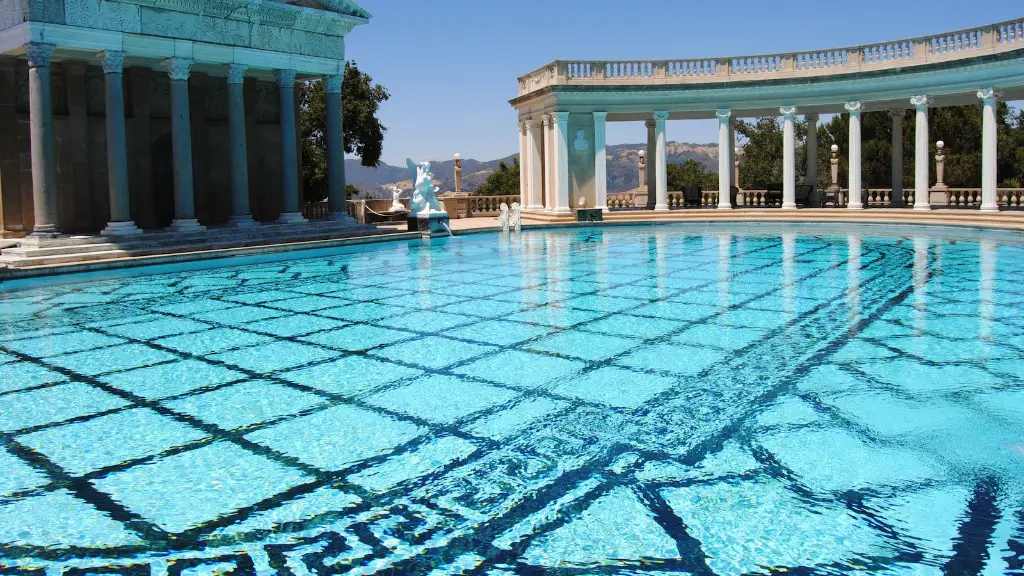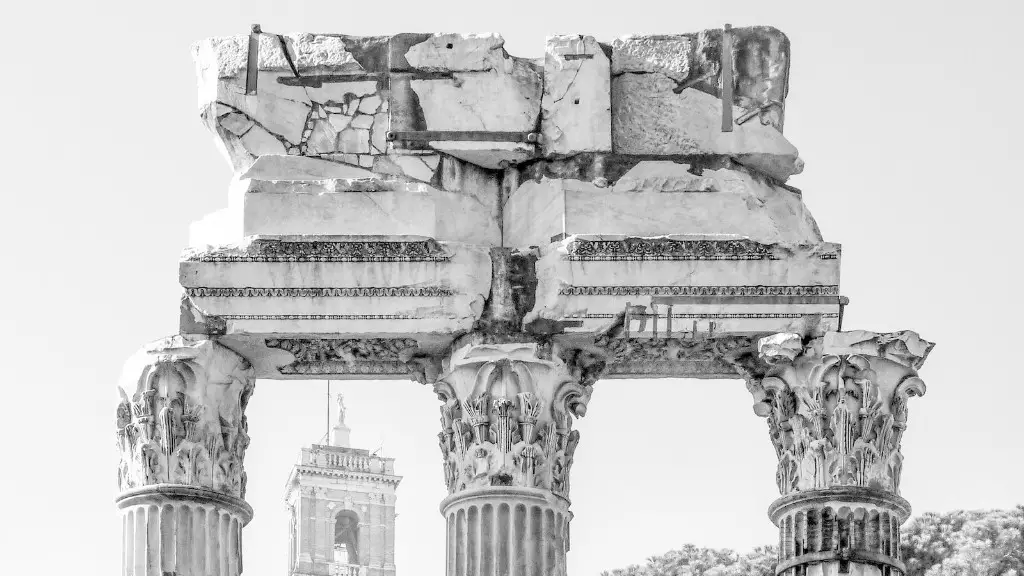The Collapse of Ancient Rome
Ancient Rome is undeniably one of the most powerful empires of all time. As its rise began, it slowly grew in power and grandeur. But a large part of its history lies in its downfall, which began in the fifth century CE and lasted until the fall of the Byzantine Empire in 1453. So when did Ancient Rome fall? When did its rulers succumb to the sheer power of its enemies? This article provides an answer to this question, giving some relevant data, perspectives from experts, own insights and analysis as well as providing some background information.
Since its rule began in 753 BC, Ancient Rome was an empire that experienced constant warfare and political upheaval. At its peak, it reached its greatest size in 117 AD, when it encompassed most of the modern-day Mediterranean. But just as it had come to dominate the known world, the Empire soon descended into turmoil and civil war, beset by corruption, economic depression and political decay.
This resulted in the gradual breakdown of the massive political and military infrastructure that had been in place since the city was founded, leading many to consider the primary cause of the fall of Rome to be internal collapse. According to one theory, the ‘decline of Rome’ was due to a combination of economic, military and political pressures that simply became too much for the Roman state to bear. In this perspective, the fall of the Roman Empire was a cumulative process that began long before the ‘fall’ actually occurred.
Other experts, however, have attributed the fall of Rome to external forces. Specifically, scholars have argued that the ‘barbarians’, the nomadic Germanic tribes that invaded the Empire in the fifth century CE, played an important role in the fall of Rome. In this view, these tribes weakened the defenses of the empire, which allowed them to take control of much of the western portion of the empire and eventually bring about its downfall.
Research also suggests that the spread of Christianity throughout the empire had a profound effect on the people. Many historians see the adoption of this religion as a key factor in the eventual collapse of Rome, as it brought about a drastic change in the way the people engaged with their surroundings and the world at large. This shift in the cultural and spiritual makeup of the Empire had a profound effect on its government, economy and culture, leading many to see this as a major contributing factor in its ultimate downfall.
The period of instability that followed the fall of Rome was known as the ‘Dark Ages’, as Europe and the Mediterranean fell into chaos and anarchy. During this time, no single powerful state took control and the power of the old Roman Empire was replaced by smaller, more localized states and kingdoms. This period lasted until the 10th century, when a new order began to emerge in the form of the Carolingian Empire.
In conclusion, the exact cause of the fall of Ancient Rome is still very much in dispute. Different experts have come to different conclusions, with some attributing it to a combination of internal and external pressures, and others to specific external factors such as the barbarian invasions or the spread of Christianity. Ultimately, however, all agree that the fall of Rome marked the end of one of the most powerful empires of all time and changed the course of history forever.
Social & Cultural Structures
Throughout its rule, Ancient Rome was renowned for its sophisticated infrastructure and its advanced social and cultural structures. It provided an impressive system of law, organization, and infrastructure that encouraged growth and stability. This system also helped Rome establish one of the most successful and enduring civilizations in history.
The most important social structure of the Roman period was its extraordinary hierarchy. This highly organized hierarchy allowed political and administrative power to be balanced across the Empire and resulted in a strong sense of unity among its citizens. Other prominent features of Ancient Rome’s social structure included a complex network of government and religious institutions, the creation of urban centers, the expansion of its art and architecture, and the spread of languages, literature and regulations.
In terms of its culture, Rome was a vibrant and diverse place. Its influence can still be seen in literature, art, music and architecture. From its spectacular monuments and amphitheatres to its philosophical and legal traditions, Ancient Rome has had an enormous impact on modern culture. Its citizens enjoyed a variety of urban activities, from theatre, music, and public events to the splendors of the ancient Olympic games.
Along with this unparalleled wealth of culture, Ancient Rome also boasted a complex and expansive network of roads, bridges, and aqueducts. These structures improved the functionality, efficiency and longevity of the Empire, further contributing to its success and longevity.
All of these accomplishments can easily be seen as vital factors in the rise and fall of the Roman Empire. These aspects of the culture played an especially important role in the unity and stability of the Empire, and helped it become the most powerful and influential political force in the Mediterranean.
Military & Political Breakdown
Although unprecedented political, social and cultural advances characterized Ancient Rome during its rise, its demise was largely due to a number of military and political breakdowns. Factors such as a lack of central control, ineffective military tactics, economic instability and political disruption all contributed to the Empire’s eventual demise.
One of the major factors of the political breakdown was the increased influence of the Praetorian Guard, a powerful group of mercenaries who served as the emperor’s personal bodyguard. Over time, the Praetorian Guard amassed political power for its own benefit, usurping the authority of the Senate and the Emperor. This weakened the already fragile system of checks and balances, leading to a period of instability and eventually the fall of the Empire.
The Empire also faced a number of external military threats that further weakened its defenses. One of the most prominent was the barbarian invasions which weakened the once formidable Roman military. In addition, the failure of the Roman government to make sound fiscal decisions, such as failing to raise taxes, caused a severe economic crisis. This weakened the Empire’s finances and contributed to its eventual downfall.
The decline of the Roman military can also be attributed to its failure to develop advanced tactics or strategies. Rome was still largely dependent on its traditional infantry, as well as its navy, both of which were outdated by the standards of its enemies. Its failure to adopt advanced tactics and strategies further weakened its defenses and ultimately led to its downfall.
Economic Decline
The Roman Empire was held together by a tightly knit economic system that relied on the interdependent workings of its citizens. This included a wide variety of trade, commerce and financial activities which all played an important role in the Empire’s prosperity and stability. Over time, however, this system began to unravel as the economy struggled to cope with external and internal strains.
One of the main causes of the economic decline of the Roman Empire was a failure to raise taxation. As populations grew, the government was unable to raise sufficient revenue to maintain its public works and its standing army. This resulted in a lack of financial stability, which significantly weakened the Empire’s economy and ultimately led to its downfall.
Other contributing factors to the economic decline of Ancient Rome included a decline in labor efficiency due to a shift from traditional agricultural practices to large estates and tax farms, a decrease in new investment and trade, a decline in the production of food and resources, and a rapid increase in the cost of living.
Finally, the decline of the Roman currency and its corresponding inflationary effects played a significant role in the Empire’s financial crisis. The currency began to steadily devalue, leading to an increase in commodity prices and a lack of purchasing power. This resulted in a decrease in economic output and a further decline of the Empire’s finances.
Economic and Political Implications
The fall of Ancient Rome had far-reaching economic and political implications. In the centuries after its fall, the region was almost completely reorganized, with small provinces and city-states taking control of the area formerly held by Rome. This ultimately led to the rise of new forms of government in the Mediterranean and in Europe at large, such as the city-states of Italy and the powerful kingdoms of the Middle Ages.
In addition, the fall of Ancient Rome had a lasting economic impact. Its economy and infrastructure had been highly advanced in its day, and subsequent rulers were unable to replicate or maintain it, leading to an overall decline in production and a decrease in demand for goods and services. This, in turn, had a long-lasting effect on the economic landscape of much of Europe.
In sum, Ancient Rome was an incredible achievement and its decline was an immense loss to the world of politics, culture and economics. Its fall marked a pivotal point in the history of the Western world, ushering in a period of decline and reorganization. Although its decline ultimately led to a number of new developments and new forms of government, the fall of Ancient Rome stands as an important reminder of the fragility and unpredictability of power.
Cultural Impact
The decline of the Roman Empire had a major impact on the spread of culture throughout Europe and the Mediterranean. One of the more notable effects was the decline of the Latin language, which had been the primary language of the Empire since its rise. As the political sphere changed and became dominated by smaller provinces and kingdoms, Latin gradually gave way to the languages of the invading peoples. This had a lasting effect on the culture of the region for centuries to come.
In addition, the decline of the Empire had a major impact on the spread of Christianity. As the Empire weakened, Christianity began to spread and grow into the major religion of Europe. This was largely due to the efforts of missionaries, priests and bishops who brought the religion to the far corners of the Roman world, facilitating the spread and eventual dominance of Christianity.
Finally, the fall of the Roman Empire ushered in an age of cultural decline and stagnation. The richness of the Roman culture was gradually forgotten as smaller cultures took hold. This resulted in a number of new cultural developments, such as the rise of feudalism and the Middle Ages, but it also marked a significant decline in innovation, creativity, and progress.





